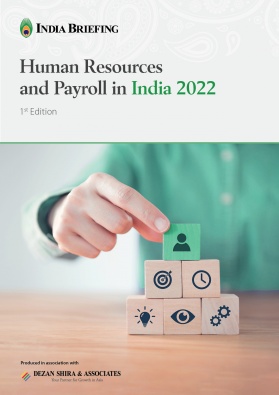A Guide to Popular Income Tax-Saving Investment Options in India
Here are a few popular investment options in India for income tax saving under the old tax regime under Sections 80C, 80CCC, and 80CCD (1).
An individual taxpayer who intends to choose the old tax system for the current fiscal year (FY) 2022–2023 must execute their tax-saving activities by March 31, 2023 or earlier. An individual may deduct up to INR 150,000 from their taxable income under Section 80C. By utilizing this deduction, a person’s taxable income decreases, which lowers their income tax obligation.
Here are a few popular investment options that can be exercised to reduce the taxable income under Sections 80C, 80CCC, and 80CCD (1).
Equity-linked Savings Scheme (ELSS)
One of the popular investment options utilized under Section 80C to reduce taxes is ELSS mutual funds. The maximum amount that can be claimed as a deduction is INR 150,000. One of the riskiest investment alternatives in the 80C basket is ELSS mutual funds, which invest in equity and receive returns that are market-linked.
The lock-in period for ELSS mutual fund schemes is three years. As a result, after money has been deposited, an individual investor cannot withdraw it until three years have passed from the date of the transaction. Among all the other Section 80C choices, ELSS has the shortest lock-in time. The maximum amount that may be invested in ELSS mutual funds has no upper limit. Each mutual fund house has a different minimum investment amount.
If a redemption is made, the return on the ELSS mutual fund will be taxed. If total equity capital gains in a financial year exceed INR 100,000, the capital gains will be taxable.
Public Provident Fund (PPF)
One of the most widely used small savings plans is PPF. PPF has an EEE tax status, which means that PPF investments are tax-free, as are the interest payments made on them and the maturity amount.
PPFs are less risky than ELSS mutual funds because they are investments in debt. PPF has a sovereign guarantee because it is a government scheme. Every quarter, the government releases information regarding PPF interest rates. The PPF is offering an annual yield of 7.1 percent for the January–March 2023 quarter. On March 31, 2023, the government will assess the PPF interest rate for the quarter from April to June 2023.
PPF has a 15-year lock-in term that begins following the conclusion of the fiscal year in which the initial investment is made. For instance, if someone invests in PPF for the first time in October 2022, the 15-year lock-in term will begin to be calculated on April 1, 2023. The PPF offers loan and partial withdrawal options despite having a 15-year lock-in term.
PPF investments can be made for as little as INR 500 and up to INR 150,000. PPF accounts can be opened at either a bank or a post office.
It must be noted that minimum investment must be made in a PPF account every financial year once it has been opened. PPF accounts will be discontinued if the required minimum investment is not made through one financial year.
Employees Provident Fund (EPF)
For salaried individuals, EPF is one of the most popular tax-saving tools. A salaried employee will subscribe to the EPF account if the organization is covered by the EPF law. A person must contribute 12 percent of their basic salary to the EPF account, and their employer will match that amount.
The government announces the interest rate for EPF accounts. There is a lock-in period until retirement for the EPF account as well. Nonetheless, there are some circumstances where a partial withdrawal from an EPF account is allowed. Also, an individual may withdraw all funds from their EPF account and close the account if they do not find another job within two months of quitting their position at the company that opened their EPF account.
The amount that can be contributed to an employee’s EPF account is determined by the employee’s salary. However, the Voluntary Provident Fund can be used by an individual to make additional contributions to the EPF account (VPF). EPF and VPF accounts operate under the same rules.
The interest received on excess contributions will be subject to individual taxation if the total contribution to the EPF and VPF accounts in a fiscal year exceeds INR 250,000. Taxes are not due on the maturity sum that is received from an EPF account.
National Pension System (NPS)
Under Section 80CCD (1) of the Income-tax Act, investments made in NPS are eligible for a deduction. The policy offers the investor a pension after they reach retirement age. Market fluctuations affect the NPS’s returns.
Section 80CCD(1) allows for a deduction equal to 10 percent of pay for NPS investments (basic salary plus dearness allowance). A maximum deduction of INR 150,000 may be claimed under Section 80CCD (1).
The NPS has a lock-in period till the age of 60 years. NPS provides a partial withdrawal option, although such withdrawal is only permitted in certain situations. An individual may withdraw up to 60 percent of the corpus in one lump sum once it reaches maturity. Taxes won’t be due on this one-time payment. An annuity plan must be purchased with the remaining 40 percent of the funds. The annuity/pension received will be taxable in the hands of individual.
There is no maximum investment cap in NPS; the minimum contribution to NPS is INR 500. To avoid getting their NPS account cancelled, an individual opening an account must make a minimum contribution of INR 1,000 in a financial year.
National Savings Certificate (NSC)
One can obtain an NSC by going to the nearest post office. Every three months, the government releases the interest rate for the NSC. The interest rate, however, is fixed once the investment is made and lasts until maturity. Currently, NSC is offering interest rate of seven percent per annum.
NSC has a five-year lock-in period. As a result, once a person invests money, it cannot be withdrawn before the completion of five years. Under NSC, there is no upper limit and the minimum amount to be invested is INR 1000. Nevertheless, Section 80C limits the tax benefit to INR 150,000. When the NSC reaches maturity, the interest earned is reinvested. In the hands of an individual, the interest from NSC is taxable. But, because the interest is reinvested, Section 80C allows for a deduction for it.
Unit-linked insurance plans (ULIP)
To reduce taxes, a person can invest in ULIPs. It is a type of insurance that provides both life insurance protection and the advantage of equity investing. Market fluctuations affect how much money ULIP products return. The ULIP has a five-year lock-in period. The person is permitted to withdraw the funds when the lock-in time has passed.
The amount that can be invested in a ULIP relies on a number of variables, including the policy duration, insured amount, and policyholder’s age. If the total premium paid for all ULIPs in a financial year exceeds INR 250,000, the maturity proceeds from the ULIP will be taxed.
About Us
India Briefing is produced by Dezan Shira & Associates. The firm assists foreign investors throughout Asia from offices across the world, including in Delhi and Mumbai. Readers may write to india@dezshira.com for more support on doing business in in India.
We also maintain offices or have alliance partners assisting foreign investors in Indonesia, Singapore, Vietnam, Philippines, Malaysia, Thailand, Italy, Germany, and the United States, in addition to practices in Bangladesh and Russia.
- Previous Article India’s Central Bank Grants ‘In-Principle’ License to 50 Payment Aggregators: Key Details
- Next Article MCA Extends Some Reporting Compliance Deadlines to March 31: V3.0 Portal Migration








